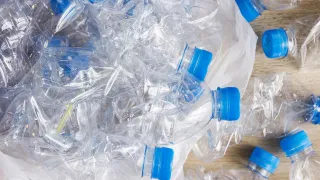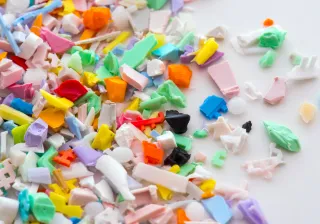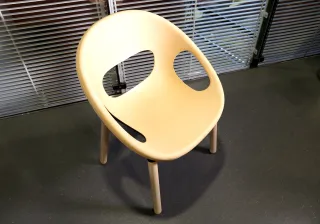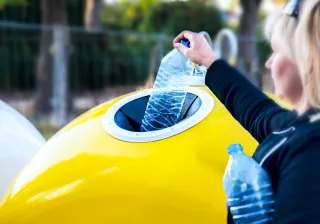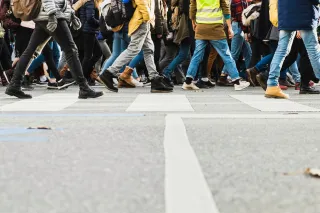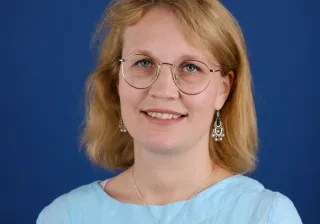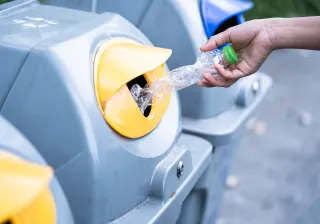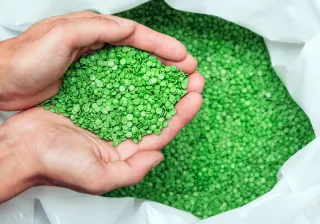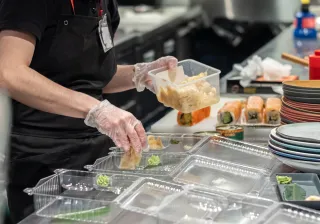Spring is the time of change. Nature gradually begins to turn green, and the birds are singing most beautifully to attract each other’s attention. However, the only thing a material scientist sees is the litter revealed from under the snow banks with their bright colours competing with the blue of Anemones Hepatica. And that indeed is something that gets even a scientist’s feelings running high: seeing faults around you. What could you do to promote responsible use of plastics in every single person’s daily life?
Time of change
The plastics industry is also in for a change. The European Commission’s European Plastics Strategy work, launched in January 2018, has advanced: preliminary new information has been revealed of a proposed Directive that would target 10 products causing the highest amounts of litter. These products constitute 86% of the plastic litter found on beaches. Such short-lived products include cotton buds, cutlery, straws, balloons, plastic wrappers, and different corks and lids. The list also includes drinks bottles, which may appear strange from the viewpoint of Finnish consumers, because in Finland the recycling of drinks bottles functions in an exemplary fashion. However, when discussing the issue of plastics, we should remember that most of the oil and natural gas is consumed for transport, electricity production and heating, and not for plastic production: the drinks bottle in nature just happens to be more visible and concrete.
In the face of change, more and more companies need to review their strategies for the future, as survivors are those who are able to foresee the changing times well ahead of others. In the circular economy race, our western colleagues declared already last year that Sweden intends to be the best in the world in circular economy. At the same time, we Finns modestly state that circular economy will provide us with various opportunities for success. This is a big difference.
A gang of three
The European consumers generate about 27 million tonnes of plastic waste annually, of which about 1/3 is recycled. There are, of course, differences between countries, but there is also room for improvement. Most of the plastic waste consists of packaging, for which the current recycling target is 22.5%, but in 12 years’ time it will already be 55%. To function properly, the recycling value chain needs three things: material streams, logistics and quality.
Sufficient streams of plastic ensure that recycling can generate new business operations or that the side streams of plastic can be utilised as part of own production. Sufficient amounts of material streams are linked with the smooth running of production processes. The manageability of the process suffers if the properties of the recycled materials used do not remain the same or if the amount of recycled plastics mixed with the virgin plastic varies. The recycled plastic is not completely comparable to virgin material because its history changes its properties.
Efficient logistics is the key to collecting plastic fractions in a cost-effective way. Logistics cooperation, more sophisticated sorting vessels and taking account of the consumer perspective are key targets for development. The most important task for the consumers is to bring the plastics back to circulation, but it should not become an insurmountable mission for them.
Good quality can mean several different things. In terms of physical properties, the plastic streams should be such that their mechanical recycling is still possible. The streams should be uniform in composition, so that different types of plastics would not be mixed together. Thirdly, the recycled material produced should have such properties and level of purity that businesses, public operators and, ultimately, consumers accept their use in the products they consume.
Therefore, the gang of three − material streams, logistics and quality − are primarily driven by consumers, but by legislation and money as well. The consumers can also influence the latter two by using their voice and, if necessary, by closing their wallets when concerns are raised or if only bad alternatives are available.
Take the risk − fall in love with the world of plastics!
People often ask me how can consumers know what is the right way to act or where they can find correct information about recycling. The guideline I have given them is to follow different media and publications, and to begin with questioning all the information supplied by them. Only after this they can eventually form their own opinions. Getting to know the world of plastics can be rewarding when you really study it in depth. Before making a leap into the fascinating world of recycling, it should be remembered that there is not only one correct solution, since circular economy is a combination of many contributing factors.
The EU waste hierarchy is a good starting point for the search of information. Every consumer can learn to become a responsible user of plastics by remembering the 4R mnemonic coined for the purpose: Reduce – Reuse – Recycle – Recover. In practice, consumers can apply this mnemonic, for example, as follows:
- Think about your own consumption and how to target it
- Sort and recycle your waste
- Require recycled plastic products of a higher quality
- Take your waste to energy recovery if recycling is not possible
- Get more information about plastics and recycling
- Try to see things on a larger scale and across the whole value chain
Love is in the air
The publication of the book “Silent Spring” in 1962 has been considered the starting point of the environmental movement. At that point, the general public began to become aware of the negative effects of insecticides on nature and the human health. Worldwide, people were also affected by the estimate made by the Ellen MacArthur Foundation a few years ago that by 2050 there will be more plastic than fish in the seas. Esko Valtaoja also took a stand on the state of the environment in February 2018, when he predicted that at the current rate we will run out of natural resources within 10 to 15 years. The new warning bells have now been sounded. Spring may therefore be quite different in the near future, which, for a scientist, is a cause for concern.
The law of supply and demand also applies to recycled plastic products: when the public sector and consumers require high-quality products made in accordance with the principles of sustainable development, such products will also be made available.
So the realisation of the black vision presented by the Ellen MacArthur Foundation is only slightly over 30 years away. Perhaps at that point we will be discussing with my youngest child, already an adult by then, what actually happened in 2018? Perhaps the investments made in circular economy in the past bore fruit, and we can still enjoy the benefits provided by plastics. Or maybe they failed, and the worst-case scenarios of a polluted environment came true. When my youngest then asks what did you do for the matter in 2018, I can say: your Mom did her best. So great is love.

